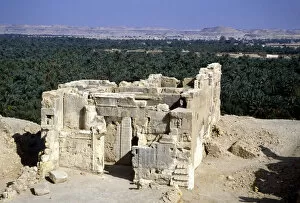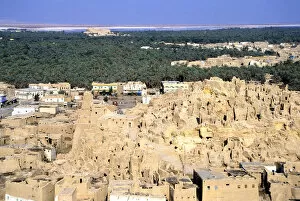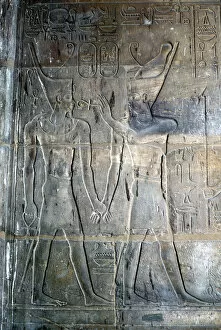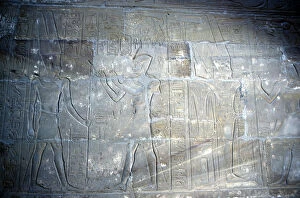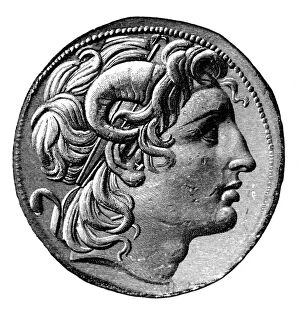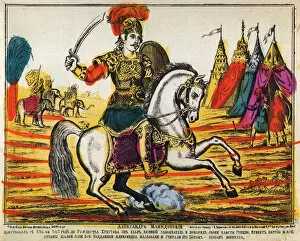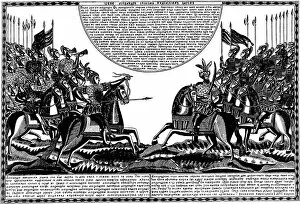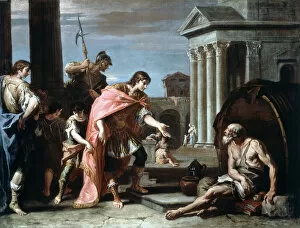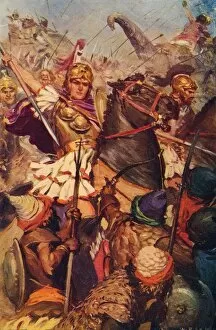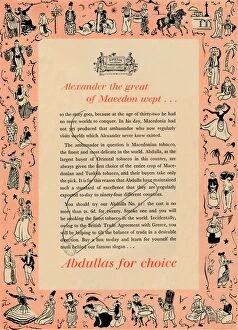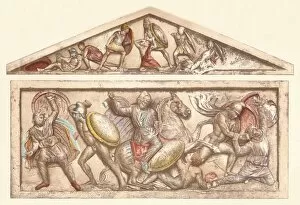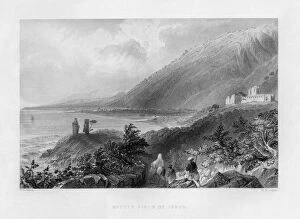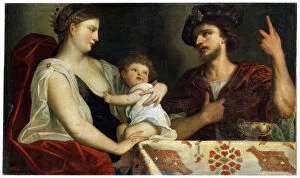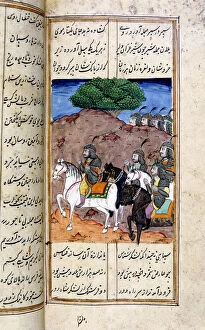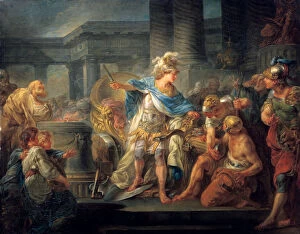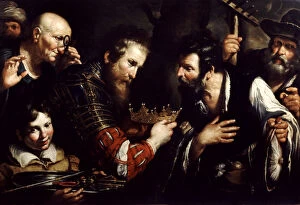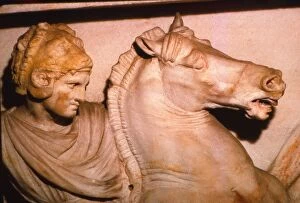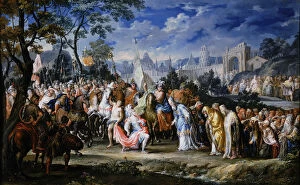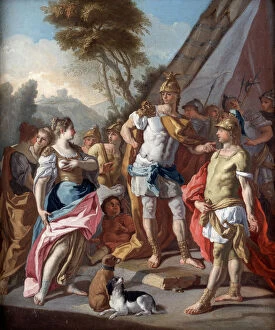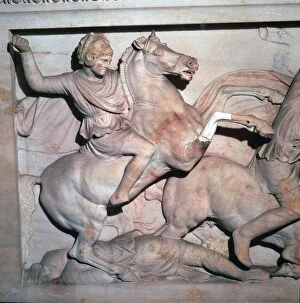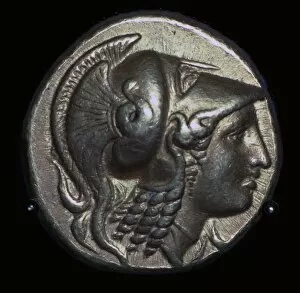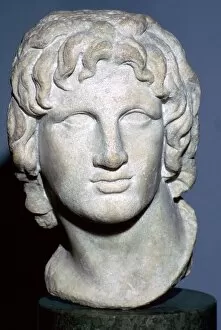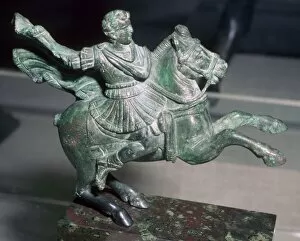Iskandar Collection (#3)
Iskandar, also known as Alexander the Great, was a legendary figure in ancient history
For sale as Licensed Images
Choose your image, Select your licence and Download the media
Iskandar, also known as Alexander the Great, was a legendary figure in ancient history. His conquests and achievements have been immortalized through various artworks and depictions throughout the centuries. In one relief, we see Iskandar being blessed by Amun-Ra, showcasing his divine connection and favor from the gods. This scene takes place in a sacred temple dedicated to Amun Mut & Khons in Luxor, Egypt - a testament to his influence reaching far beyond his homeland. Another artwork captures the meeting with Diogenes of Sinope. Painted by Quirin Mark in 1784, it portrays their encounter where Iskandar is said to have admired Diogenes' wisdom and philosophy. Domenico del Barbiere's painting "The Banquet of Alexander" depicts an opulent feast held by Iskandar himself. It showcases his grandeur and power as he celebrates his victories with lavish festivities. Ptolemy Lagus is another significant figure associated with Iskandar's legacy. An unknown artist captured Ptolemy's likeness in 1830, highlighting his role as one of Iskandar's generals who became ruler of Egypt after his death. Throughout history, artists have continued to depict scenes from Iskander's life. A Lubok print from 1869 shows him on horseback during battle against Persian forces led by Darius III - a momentous event that shaped world history. One relief found at the Temple sacred to Amun Mut & Khons once again portrays Iskander before Amun-Ra - emphasizing his divine connection and reverence for Egyptian deities. An anonymous artist created an intriguing image depicting the meeting between Diogenes and Iskander around 1580-1640. This encounter symbolizes their contrasting philosophies; while Diogenes lived modestly seeking virtue over material wealth, Iskander pursued conquest and power.

